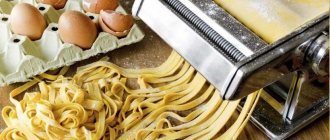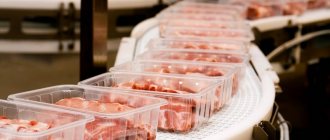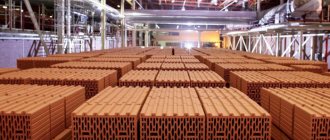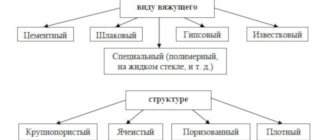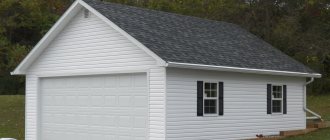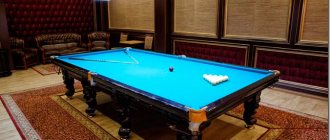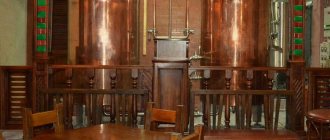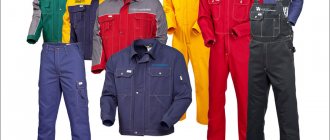Competition Analysis
Contains information about the characteristics of the selected industry, market saturation in this area and the needs of the potential client. It is especially important to conduct such an analysis for highly competitive industries - woodworking production, production of upholstered and cabinet furniture, plastic windows, doors, plastic packaging, stainless steel products, etc. In the case of high competition, the business plan should focus investors' attention on the competitive advantages of the project, while it is advisable not to focus on the uniqueness of the idea - any know-how is quickly picked up by competitors and the concept ceases to be original.
Also, you should not state that there is no competition - this may indicate low demand for a similar product. When drawing up a business plan for the production of cinder blocks, you should take into account the factories of foam blocks and expanded clay gravel blocks available in the region.
What documents are needed to open a workshop for the production of semi-finished products?
Currently, practical activities have begun to implement the project:
- Simbirsk dumplings LLC was registered at the local INFS branch;
- A building was purchased to house production. The area of the premises is 1168 m2. The building is currently being renovated in order to comply with all SES and fire safety requirements of the production facility;
- There is a preliminary agreement with the purchase of equipment for a workshop for the production of semi-finished products;
- Preliminary agreements have been concluded for the supply of semi-finished products to stores in Dimitrovgrad and Samara.
Registration of production
The organizational form of the enterprise depends on the planned scale of future activities, the materials and equipment used. Business ideas such as the production of furniture, handmade soap, soft or wooden toys, decorative fittings, paper bags or cups do not require large production facilities and can be implemented in the format of a home workshop. The organizational and legal form of an individual entrepreneur with a simplified taxation system is suitable for them.
Opening a large production facility involves hiring workers, using specialized equipment, and materials that are subject to certification. So, for the production of corrugated sheets, concrete, artificial stone, granite chips, metal mesh, it is better to register a limited liability company.
Where to start opening a workshop for the production of semi-finished products
To implement the project, it is planned to receive subsidies in the amount of 300 thousand rubles within the framework of the state program to support small and medium-sized businesses in the Melekessky district - grants for beginning entrepreneurs. Also, own funds in the amount of 700 thousand rubles will be allocated for the implementation of the project. The total investment in the project will be 1 million rubles.
Opening a workshop for the production of semi-finished products also has its own social indicators:
- Registration of a new business entity in the Melekessky district;
- Creation of 12 jobs in the district;
- Receipt of additional tax payments into the budget of the Melekessky district.
Search and rental of premises for production
The choice of premises depends on the product being produced. Sewing bed linen or a small carpentry workshop can be organized at home in the form of an individual entrepreneur. For furniture production, production of pallets, charcoal, an area of 200 m2 will be required, not counting the warehouse area. A plant that produces products using specialized equipment needs a larger area. Thus, for the production of building gypsum, crushed stone, rubber tiles, paving stones, a room of 800 m2 is required that can meet the electricity needs.
Search for sales channels
You can sell knitwear by collaborating with retail clothing stores in a specific area, as well as by organizing your own sales point. At the same time, it is necessary to constantly promote products, for this there are the following ways:
- TV advertising – an opportunity to reach a wide audience;
- radio advertising is effective for promoting youth models;
- Internet – creation of your own website, where a catalog of manufactured products with their prices will be posted, as well as advertising on social networks and cooperation with online stores;
- advertising in print media and the metro - attracting buyers with low or medium income;
- distribution of catalogs and distribution of leaflets;
- carrying out promotions;
- fashion shows;
- visiting specialized fairs.
Opening a project for the production of knitted clothing is a profitable business. With a competent approach to its organization, the investment will pay off in a short time. We recommend looking at existing knitting factories and conducting competitive intelligence.
27.12.2019
Purchasing the necessary equipment
There are three options for purchasing equipment for production:
- leasing or rental;
- Buy a business plan for production,
purchase of used equipment; - purchase of new equipment.
The first two options are especially relevant for small businesses. This will reduce initial costs, and as the business expands, the equipment can be purchased or replaced with new ones. Some products require the use of new installations only. To produce drinking bottled water, you need to purchase coarse and fine filters, pumping units, sterile tanks, filling and labeling machines.
Choosing a room
The location of the workshop itself is not of fundamental importance. It will be more profitable if it is located somewhere on the outskirts or even outside the city, in industrial areas. So, the rent will be lower, which will save your costs.
But the size of the studio is of great importance. The documents indicate that one employee must have at least 7 sq. m. of free space. Therefore, depending on the expected production turnover and the number of hired personnel, it will be necessary to accurately calculate the dimensions of the building.
In addition to the sewing workshop, there should be other areas, such as a warehouse, a cutting room, ironing areas, staff rest areas and a bathroom. Taking this into account, the minimum dimensions of the rented premises are approximately 60-70 square meters. m. It is important to take care of sanitary standards, lighting, ventilation and heating. Remember that the building must meet all the requirements of regulatory services.
Search and hiring of employees
Opening a production facility involves attracting highly qualified personnel and further training in the specifics of the technological process. To start the enterprise you will need personnel:
- manager or director;
- director of operations;
- The cost of a business plan for the production of
a master workshop; - 2 workshop workers;
- Sales Manager;
- accountant.
The production of technologically complex products will require the involvement of specialist engineers on a permanent or temporary basis and a process engineer.
Assess technical capabilities and plan production launch stages
Determine in advance the list of components that will be needed for your product. We opened production in cooperation with foreign partners. It was important that our Caiman brand equipment had the same qualities as its Western market counterparts.
To achieve this, a complex of works was carried out:
- The French lines were established.
- Specialists from partner factories were invited to train staff. Training is not a one-time event, but an ongoing process. All processes must be lined up and work like clockwork.
- An important stage in opening production is passing the product certification procedure. It is necessary to confirm full compliance of manufactured products with specified standards, including safety for consumers. Each category produced until 2014 was marked with a mark of conformity (PCT). After the introduction of the requirements of technical regulations of the Customs Union, the products receive an EAC certificate. This procedure is not quick - the equipment undergoes an independent examination in a testing laboratory.
- We introduced a multi-stage product quality control system. So, when units arrive at the warehouse, we carry out a visual inspection of them. The second stage is checking the assembly quality: the inspector selectively starts up the equipment, checks the completeness and quality of the assembly (for example, among walk-behind tractors, every eighth piece of equipment is checked, for gas mowers - every fifth, for lawn mowers - every eighth). Finally, the company has implemented a quality control service that accepts comments through the feedback form on the website and promptly (within one business day) processes received applications.
- We used exclusively original components in our production. Thus, we were able to provide quality that fully meets the requirements of professional and premium equipment.
Analyze demand before starting production. At the time of launch, a significant share of the garden equipment market both abroad and in Russia was occupied by petrol mowers, lawn mowers, and trimmers. The first products we produced were gas mowers, then walk-behind tractors, lawn mowers and riders.
Financial planning business plan
Below is an example of financial calculations for a business plan for the production of paving slabs from scratch:
| Investment costs | 380,000 rub. |
| Net profit per month | 135,000 rub. |
| Total expenses per month | RUB 266,000 |
| Cost of 1 m2 of tiles | 320 rub. |
| Payback period | 3 months |
Financial part
For any businessman, it is important to calculate in advance the expected costs and profits and assess the profitability of the project.
| Initial Investment | Cost, in rub. | |
| 1 | Paperwork | 20 000 |
| 2 | Room renovation | 20 000 |
| 3 | Purchase of equipment | 500 000 |
| Total: | 540 000 |
But that is not all. After all, considerable sums will be spent monthly on the maintenance of the sewing workshop.
| Fixed expenses | Price, in rub. | |
| 1 | Building rental | 40 000 |
| 2 | Delivery of raw materials and goods | 20 000 |
| 3 | Purchase of materials | 200 000 |
| 4 | Staff salaries | 100 000 |
| 5 | Utility deductions | 15 000 |
| Total: | 375 000 |
Depending on the volume of production, as well as on the set prices and the number of buyers found, the entire income will depend. For example, per month you produce on average about 500 finished products from purchased raw materials. Price per unit – 1500 rubles. Then the revenue will be 750,000 rubles. Net profit – 375,000. As a result, full payback is achieved within two months of productive work.
But you need to understand that you may not reach such speeds right away. At first, the quantity of goods sold, even with established production, will be significantly lower. Experienced entrepreneurs say that payback is most often achieved within six months of operation of a small company.
Video: how to open a sewing production?
Description of products and services
The initial range of products produced by the workshop will include:
- Homemade dumplings, wholesale price 130 rubles/kg;
- Amateur dumplings, wholesale price 110 rubles/kg;
- Russian-style dumplings, wholesale price 90 rubles/kg;
- Homemade cutlets, wholesale price 110 rubles/kg;
- Amateur cutlets, wholesale price 90 rubles/kg.
As the enterprise develops and new sales channels are established, the range of products will increase.
About 150 kg of finished products will be shipped daily. The average wholesale selling price will be 106 rubles/kg.
Production management goals, measurable indicators of external goals - OEE and MCE
Ultimately, automation of production management is subordinated to the global goal - increasing profit generation . Obviously, the payback period of the project is the period during which, as a result of implementing the system, additional profit (income minus expenses) will be generated, equal to the cost of implementation. Business owners, as a rule, think in terms of exactly this criterion, and the decision to start an automation project depends on the answers to the questions:
- Assess the payback period of the implemented automated system.
- Assess the risk that the assessment will be unreliable.
There is a system of indicators (metrics) by which one can judge the impact of the production system on the global goal. Some of the most important actual indicators of the efficiency of the production system are:
- OEE – (Overall Equipment Effectiveness) – the overall efficiency of using technological equipment, or the payload density of the equipment.
- MCE – (Manufacturing Cycle Effectiveness) – operating cycle efficiency (speed of execution of production orders).
OEE depends on the share of downtime in the total working time, on the excess of operating time over the standard time and on the average percentage of defects:
Where:
The actual operating time of the equipment is the fund of time (for example, the duration of the shift) minus planned and unscheduled maintenance work, changeovers, lunches and other breaks). Those. this is the real time fund during which the equipment performed the actual number of operations per shift.
Time fund – shift duration.
Standard operation time is the time that should have been spent on the actual number of operations per shift.
The standard time for operations with a positive result is the standard time that should have been spent on producing suitable products.
It can be seen that the formula shows the components of OEE, but if we reduce the numerators / denominators, we get:
Thus, the interpretation of OEE is quite simple - we divide the standard time that the department should have spent on the actual number of good products produced per shift by the duration of the shift.
MCE characterizes the dwell time. MCE is maximum and equal to 1 if the holding time is 0. This means that the residence time of a batch of products in the department is equal to the total time of operations on the batch.
The higher the OEE and MCE, the higher the production efficiency.
However, the desire by organizational measures to increase OEE leads to a decrease in MCE, and vice versa.
MCE largely depends on the quality of the surgical schedule and its optimality. In departments with discrete production, with a large machine fleet, with small-scale or unit production, maximizing MCE can be achieved using automated scheduling in MES systems.
Growth in OEE and MCE are externally measurable goals of industrial control automation.
Main problems of manufacturing enterprises
Virtually all organizations face the same types of problems. In most cases, they are quite easy to identify, especially since many employees are well aware of them.
- Order deadlines are not met. Most often, this unpleasant phenomenon is caused by the lack of a proper control system over order fulfillment. Or low staff performance. This problem can also be influenced by external factors and high dependence on them.
- Unsustainable production. This phenomenon is common to most businesses. Due to the lack of clear planning of processes, as well as non-compliance with job descriptions or their absence altogether.
- Supply problems. There is a shortage of certain items of raw materials, which may result in production downtime. It can also be expressed in inefficient use of the raw material base, when there is a large number of surpluses in warehouses. This results in low conversion of resources.
- Poor turnover. Situations may arise when many items are stored in warehouses due to a lack of demand for them or the seasonality of the goods. And vice versa – products that are in demand are not produced in sufficient volumes.
- ERP implementation. Many programs and activities aimed at increasing production efficiency do not produce the expected results.
What equipment to choose for the production of semi-finished products
The main equipment required for the production of semi-finished products includes: a dumpling machine, a dough mixing machine, a flour sifter, a meat grinder, a blast freezer, a split system, a freezer, a refrigerator, and a chest.
When choosing equipment, the main emphasis is on reliability, ease of operation, availability of spare parts, low cost and, accordingly, high payback rates.
Simulator
After compiling a text that describes the main business processes, a modeling program is compiled. For more information about the modeling program, see the article Enterprise management through modeling of material and financial flows.
Typically, when developing business plans, standard programs are used, such as Project Expert - a program for preparing a business plan and analyzing an investment project. The disadvantage of such programs is that the business model on which the calculations are based does not coincide with the business model of the future enterprise, and the error in economic calculations is large.
The agency compiles the modeling program anew each time, the data is taken from the created text. If there is not enough data for modeling, then the new data is first described in the text of the project, and then used in the calculations. This provides a link between the text and the enterprise's electronic business model.
A modeling program is an economic model of a future enterprise that you can work with. By setting various project implementation scenarios, you can select the optimal project implementation scenario that suits the Entrepreneur, and see the financial result that would suit the Investor. As a result of modeling, the Entrepreneur's vision is usually adjusted. Subsequently, the modeling program is used to monitor the implementation of the project.
The calculation results are transferred to the text of the project. A standard investment analysis of the project is carried out. If necessary, several texts are prepared for different options for implementing the project.
In order to receive financing, the developed Investment Project must undergo an examination.
Stages of creating a new business
Duration of stages and cost of new business
| Stages | participants | Deadlines | Costs, % of project cost |
| Preliminary stage | Entrepreneur | At least 6 months | 0,1% |
| Getting funding | Entrepreneur, Investor, Experts | At least 3 months | 0,5% |
| Design | New enterprise, Design Institute Engineering firm Regional Administration Equipment suppliers Regionenergo, Regiongaz | At least 6 months | Up to 15% |
| and construction | At least 9 months | Up to 40% | |
| Launch of production | New enterprise, Engineering company Recruitment agency Suppliers of raw materials Product consumers Rostest, SES, Firemen | At least 3 months | Equipment up to 30% Production launch up to 5% |
| Production activities | Entrepreneur, Investor New enterprise Suppliers of raw materials Consumers of products | Working capital up to 10% | |
| Total | 27 months | 100% |
As you can see, the process of creating a New Manufacturing Enterprise is quite long and requires the involvement of many participants and a variety of professional knowledge that the Entrepreneur does not have.
All stages of creating an enterprise are described in detail when developing the Investment Project.

